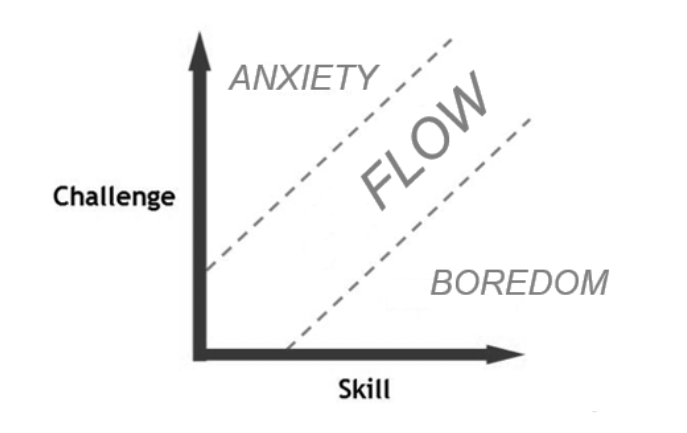Peter Liljedahl on...Flow: A Framework for Discussing Teaching
Peter Liljedahl is a professor of Mathematics in the Faculty of Education and an associate member in the Department of Mathematics at Simon Fraser University. The following is an excerpt from his 2016 article on using flow to talk about engagement in the mathematics classroom. This article was originally published here:
Liljedahl, P. (2016). Flow: A Framework for Discussing Teaching. Proceedings of the 40th Conference of the International Group for the Psychology of Mathematics Education, Szeged, Hungary.
In this paper I explore Mihály Csíkszentmihályi's notion of flow as a lens to analyse the teaching practices of two very different teachers. Results indicate that flow is not only a good theoretical framework for drawing attention to the differences in teaching style, but also for describing these differences in ways that is grounded in what we know about good learning. The possibility of shifting flow from a descriptive framework to a prescriptive one is also explored.
FLOW AND THE OPTIMAL EXPERIENCE
In the early 1970's Mihály Csíkszentmihályi became interested in studying, what he referred to as, the optimal experience (1998, 1996, 1990),
“a state in which people are so involved in an activity that nothing else seems to matter; the experience is so enjoyable that people will continue to do it even at great cost, for the sheer sake of doing it.” (Csíkszentmihályi, 1990, p.4)
The optimal experience is something we are all familiar with. It is that moment where we are so focused and so absorbed in an activity that we lose all track of time, we are un-distractible, and we are consumed by the enjoyment of the activity. As educators we have glimpses of this in our teaching and value it when we see it.
Csíkszentmihályi, in his pursuit to understand the optimal experience, studied this phenomenon across a wide and diverse set of contexts (1998, 1996, 1990). In particular, he looked at the phenomenon among musicians, artists, mathematicians, scientists, and athletes. Out of this research emerged a set of elements common to every such experience (Csíkszentmihályi, 1990):
There are clear goals every step of the way.
There is immediate feedback to one’s actions.
There is a balance between challenges and skills.
Action and awareness are merged.
Distractions are excluded from consciousness.
There is no worry of failure.Self-consciousness disappears.
The sense of time becomes distorted.
The activity becomes an end in itself.
The last six elements on this list are characteristics of the internal experience of the doer. That is, in describing an optimal experience a doer would claim that their sense of time had become distorted, that they were not easily distracted, and that they were not worried about failure. They would also describe a state in which their awareness of their actions faded from their attention and, as such, they were not self-conscious about what they were doing. Finally, they would say that the value in the process was in the doing – that the activity becomes an end.
In contrast, the first three elements on this list can be seen as characteristics external to the doer, existing in the environment of the activity, and crucial to occasioning of the optimal experience. The doer must be in an environment wherein there are clear goals, immediate feedback, and there is a balance between the challenge of the activity and the abilities of the doer.
This balance between challenge and ability is central to Csíkszentmihályi’s (1998, 1996, 1990) analysis of the optimal experience and comes into sharp focus when we consider the consequences of having an imbalance in this system. For example, if the challenge of the activity far exceeds a person's ability they are likely to experience a feeling of anxiety or frustration. Conversely, if their ability far exceeds the challenge offered by the activity they are apt to become bored. When there is a balance in this system a state of, what Csíkszentmihályi refers to as, flow is created (see fig. 1). Flow is, in brief, the term Csíkszentmihályi used to encapsulate the essence of optimal experience and the nine aforementioned elements into a single emotional-cognitive construct.
Interested to read more? Find the rest of the article HERE

